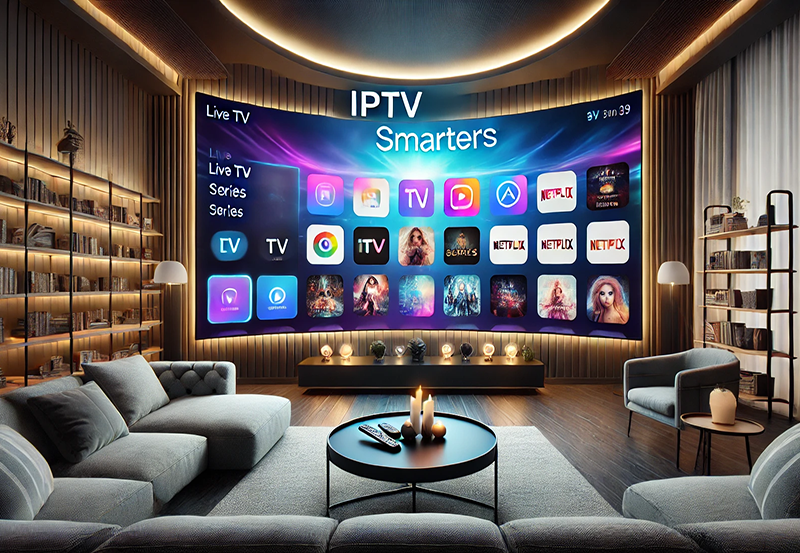Launching into the world of IPTV with Plex can seem like a daunting task, but it doesn’t have to be. Plex, a powerful media server, offers an unparalleled way to organize, stream, and access your media content anywhere. Pairing Plex with IPTV opens up a treasure trove of television shows and live broadcasts at your fingertips. This comprehensive guide walks you through every necessary step to kickstart your Plex setup, ensuring you maximize your IPTV experience.
Getting Started with Plex
Before diving into the IPTV setup, ensure you have Plex properly installed and configured. Plex requires a server to host your media library which can be set up on various platforms, including Windows, macOS, Linux, and even NAS devices.
Downloading and Installing Plex
To get Plex up and running, start by downloading the latest version from the Plex website. Follow these installation instructions according to your operating system:
Pro Suggestion:
Enjoy crystal-clear streams of British TV with IPTV for UK channels and watch all your favorites on demand.
- Windows: Double-click the installer file and follow the on-screen instructions.
- macOS: Open the downloaded DMG file and drag Plex into the Applications folder.
- Linux: Use the command line to install using the package manager.
Setting Up Your Plex Server
After installation, launch the Plex server and create an account if you don’t already have one. This step is critical for accessing your server across different devices. You’ll need a stable internet connection to complete the setup.
Once logged in, you’ll be prompted to set up your first media library. You can choose from movies, music, photos, or other video types. Select the appropriate category, then add folders where you’ve stored your media content. Plex will automatically organize and fetch metadata for your files, giving your library a polished look.
Configuring IPTV on Plex
Plex does not natively support IPTV, but by leveraging additional plugins, such as xTeVe or TVHeadend, you can integrate IPTV seamlessly into Plex. This section outlines the steps to configure IPTV using the best practices and tools available.
Installing the IPTV Plugin
Step 1: Choose an IPTV Plugin
The choice of an IPTV plugin is crucial. xTeVe is widely recommended due to its user-friendly interface and reliability. Download xTeVe from their official site and make sure to follow the instructions for setting up.
Step 2: Configure the Plugin
After downloading, extract the files and run the xTeVe application. Configure the settings by accessing the web interface usually at http://localhost:34400. Here, you will introduce your IPTV M3U playlist file into xTeVe. Fortunately, xTeVe supports EPG (Electronic Program Guide) for a richer viewing experience.
Add IPTV Channels to Plex
With xTeVe now part of your setup, the following step links these channels to Plex.
Integrate xTeVe with Plex
Open Plex and navigate to “Live TV & DVR” under Settings. Add a new device, selecting the xTeVe server as your tuner. Plex will retrieve channel data, and in minutes, your IPTV lineup will be ready for viewing right from Plex.
Optimizing Your Plex IPTV Setup
With everything operational, it’s time to optimize your IPTV experience to make the most out of Plex. Here are some insider tips:
Organizing Your Channels
Channel downtime and unnecessary clutter can ruin your viewing pleasure. Keep only the channels you frequent. Through xTeVe, you can manage channel lists by removing or hiding channels you’re not interested in. This tailor-made view caters to your preferences and ensures faster navigation.
Maximizing Streaming Quality
Plex’s transcoding settings greatly affect streaming quality. For optimal performance, ensure your Plex server is equipped with a robust CPU with high transcoding capabilities. You might also want to consider bandwidth optimization if multiple streams occur simultaneously in your household.
Choosing the Best IPTV Service
Equally important to a smooth IPTV experience is picking the right IPTV service. Evaluate services based on channel variety, uptime, and streaming quality. Some services offer trial periods—take advantage to ensure reliability before committing.
Troubleshooting Common Issues
Despite seamless integration, issues might arise with your Plex IPTV setup. Below are some common problems and solutions:
Lagging or Stuttering Streams
This issue typically stems from insufficient network bandwidth or server capabilities. Check your internet speed, ensuring it meets the requirements for IPTV streaming. Also, consider upgrading your server hardware if performance remains poor.
Channel Unavailability
If certain channels do not load, confirm that your M3U playlist is working and up-to-date. Additionally, revisit your plugin settings if abnormalities persist.
Error Can’t Play Video
This usually indicates codec incompatibilities or file format issues. Update Plex to the latest version to resolve potential codec problems. Streaming from transcoded copies via Plex’s transcoding feature might also solve this issue.
Adapting Plex for Advanced Features
To further enrich your Plex and IPTV experience, consider these advanced strategies:
Using VPN for Enhanced Privacy
Privacy concerns are frequent with IPTV. Use a reputable VPN to protect your data and circumvent geographical restrictions. Ensure that your VPN does not throttle your connection speed, which can hinder your streaming experience.
Integrating Third-party Apps
Expand Plex’s functionality by incorporating third-party apps like Tautulli for tracking server activity and Ombi for user requests. These applications help leverage your Plex setup’s full potential by enhancing user engagement and management capabilities.
Creative Ways to Expand Your IPTV Library
While IPTV offers many channels, there’s always room for more enriching content through diverse sources:
Exploring Unofficial Channels
Many hobbyists develop free streams that are unofficial but can be accessed with an M3U playlist. Exercise caution when connecting to unofficial sources, as they might not have the same reliability as paid services.
Setting Up Geolocation Channels
Geolocation channels allow you access to region-specific content. Adjusting your settings to simulate your presence in different locations provides a varied experience, capturing unique international content.
FAQ Section

Do all IPTV services work with Plex?
Not all IPTV services are compatible with Plex directly. However, using plugins like xTeVe or TVHeadend can bridge the gap for most services by converting IPTV signals into a format Plex can understand.
What is the best IPTV service to use with Plex?
The best IPTV service depends on your specific needs, such as desired channels, budget, and reliability. It’s recommended to explore services that offer trial periods to test their stability and range.
Can I watch IPTV on Plex for free?
While free options exist, keep in mind that their reliability can vary widely. For consistent quality and support, investing in a reputable paid service is recommended.
How can I fix buffering issues when using IPTV on Plex?
Buffering often results from network congestion or insufficient bandwidth. Consider upgrading your internet speed or reducing the quality settings in Plex while monitoring network usage.
How frequently should I update my M3U playlist?
Regular updates to your M3U playlist ensure that you maintain access to all available IPTV channels. Ideally, check for updates weekly, as providers routinely revise their lists.
Why should I use a VPN with IPTV on Plex?
Using a VPN enhances privacy, secures your data from potential interceptions, and provides access to geographically restricted content. Ensure the VPN chosen doesn’t significantly slow down your connection.
Embarking on your IPTV journey with Plex can transform how you enjoy entertainment. With this guide, the setup process becomes less intimidating, offering a gateway to infinite viewing possibilities. Embrace this digital era where media isn’t bound by physical locations or schedules.
IPTV and Data Caps: Managing Your Usage




